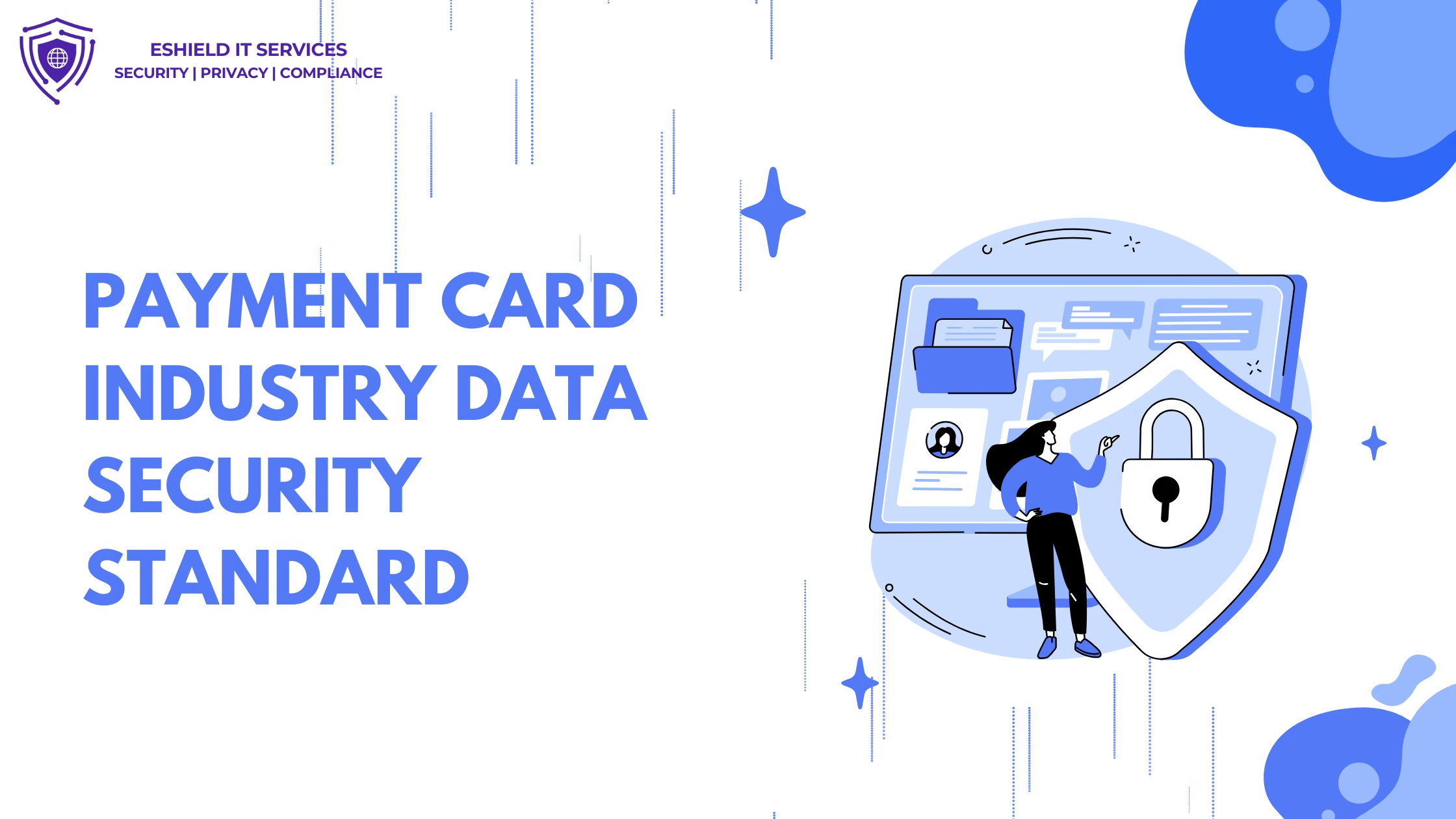In today’s interconnected digital economy, protecting customer data is no longer just good business — it’s a non-negotiable necessity. Whether you run a retail store, an eCommerce platform, or a service-based company, if you handle card payments, security isn’t optional. That’s exactly what PCI DSS stands for — a global standard that ensures organizations securely handle cardholder information and guard against data breaches.
Now, most businesses view compliance as a box to check off. But what if we told you that PCI DSS stands for much more than mere compliance? What if it’s your first and most important line of defense against modern cyber threats?
Let’s explore why PCI DSS stands for something more meaningful — not just adherence to technical standards, but a deep commitment to security, integrity, and customer trust.
What PCI DSS Stands For: A Breakdown
First things first — PCI DSS stands for Payment Card Industry Data Security Standard. It is a globally recognized framework developed to protect cardholder data from theft and misuse. Established by the Payment Card Industry Security Standards Council (PCI SSC), which was founded by major card brands like Visa, MasterCard, American Express, Discover, and JCB, PCI DSS sets forth requirements for all entities that store, process, or transmit credit card information.
At its core, PCI DSS is about creating and maintaining a secure environment for sensitive payment data. It’s the invisible shield behind every secure transaction, quietly preventing the exploitation of cardholder information.
Why PCI DSS Is More Than a Compliance Mandate
When you hear the term “compliance,” it might conjure images of endless paperwork, strict audits, and regulatory headaches. But PCI DSS is not just about adhering to external requirements. It’s a foundation for protecting your business and your customers.
Customer Trust Is on the Line
When customers hand over their card information, they are entrusting you with their personal and financial data. If that trust is broken due to a data breach, regaining it is nearly impossible. PCI DSS compliance sends a powerful message: your organization prioritizes customer security.
The High Cost of a Breach
Cyberattacks are becoming more sophisticated and frequent. According to industry research, the average cost of a data breach can reach millions of dollars when you consider the loss of customer trust, legal fees, regulatory penalties, and operational downtime. PCI DSS helps you avoid these disasters by fortifying your defenses from the ground up.
Security That Extends Beyond Card Data
Although PCI DSS focuses on protecting cardholder information, many of its security principles — such as firewalls, access controls, and encryption — also enhance the security of your entire digital infrastructure. Complying with PCI DSS strengthens your broader cybersecurity posture.
The 12 Core Requirements of PCI DSS
If PCI DSS stands for protection, then it’s important to understand what exactly it requires. The PCI DSS framework is built on 12 core requirements, grouped under six overarching goals.
Build and Maintain a Secure Network
- Install and maintain a firewall to protect cardholder data.
- Avoid using vendor-supplied defaults for passwords and other security settings.
Protect Cardholder Data
- Protect stored cardholder data through encryption and access controls.
- Encrypt cardholder data when transmitting it over open or public networks.
Maintain a Vulnerability Management Program
- Use regularly updated antivirus and anti-malware software.
- Develop and maintain secure systems and applications.
Implement Strong Access Control Measures
- Limit access to cardholder data to those who need it to do their jobs.
- Assign unique IDs to everyone with computer access.
- Restrict physical access to systems storing cardholder data.
Regularly Monitor and Test Networks
- Track and monitor all access to network resources and cardholder data.
- Regularly test security systems and processes for vulnerabilities.
Maintain an Information Security Policy
- Establish, publish, and maintain a security policy that covers all employees and contractors.
Who Needs to Comply with PCI DSS?
The short answer: any organization that stores, processes, or transmits payment card data must comply with PCI DSS. That includes:
- Brick-and-mortar retailers
- eCommerce businesses
- Payment processors
- Software-as-a-Service (SaaS) providers
- Hospitality and travel companies
- Healthcare providers accepting card payments
Even if you outsource your payment processing to a third-party provider, you may still have responsibilities under PCI DSS, depending on your specific business model and how cardholder data flows through your environment.
What Happens If You Ignore PCI DSS?
Ignoring PCI DSS is not just risky — it can be catastrophic. Here’s what non-compliance can cost you:
- Hefty fines from card networks, sometimes reaching up to $100,000 per month
- Legal action from affected customers or stakeholders
- Suspension or revocation of your ability to accept credit card payments
- Damage to your brand reputation and loss of customer trust
- Forensic investigations that are costly and time-consuming
One of the most well-known examples is the Target data breach in 2013. The attackers gained access through a third-party vendor and exposed over 40 million credit and debit card records. Target ended up paying millions in penalties and settlements, in addition to suffering severe public backlash.
PCI DSS Is Not a One-and-Done Effort
Many organizations mistakenly believe that PCI DSS is a one-time project. In reality, it is a continuous cycle of assessment, remediation, and monitoring. Networks change. New software is installed. Threats evolve. That’s why the PCI SSC requires regular updates, quarterly scans, and annual assessments.
Maintaining compliance involves:
- Performing internal and external vulnerability scans
- Conducting penetration tests
- Reviewing user access and permissions
- Logging and monitoring network activity
- Updating firewalls, antivirus, and system patches
In short, PCI DSS stands for ongoing commitment, not a temporary fix.
Practical Tips for PCI DSS Compliance
If you’re just beginning your PCI DSS journey, or if you’re looking to improve your compliance efforts, consider these best practices:
Map Your Cardholder Data Environment (CDE)
Identify where cardholder data enters your system, how it moves, and where it is stored. This will help you understand your scope and reduce unnecessary exposure.
Store Less, Secure More
The safest cardholder data is the data you don’t store. Eliminate unnecessary storage and use strong encryption for any data you must retain.
Leverage Tokenization
Replace sensitive data with tokens that are useless outside your system. This reduces your compliance scope and enhances security.
Strengthen Authentication
Use multi-factor authentication (MFA) for any administrative access and remote logins. Require strong, regularly updated passwords.
Regularly Train Employees
Your employees are your first line of defense — or your weakest link. Conduct regular training on topics like phishing, data handling, and incident reporting.
Choose PCI-Compliant Vendors
If you outsource any payment processing or IT functions, ensure that your vendors are PCI DSS compliant and can provide validation.
Humanizing PCI DSS: It’s About People, Not Just Policies
Behind every compliance policy is a person — your customer. That credit card number belongs to someone’s savings account, business credit line, or family budget. When companies take PCI DSS seriously, they are choosing to protect the financial lives of real people.
There’s also the impact on your own employees. Security awareness and strong controls empower your teams, giving them the confidence to handle sensitive data responsibly and efficiently.
Compliance isn’t about rules for the sake of rules. It’s about doing what’s right — for your business and for everyone who trusts you with their information.
What’s New in PCI DSS 4.0?
Released as the next evolution of the standard, PCI DSS 4.0 introduces several key changes to address modern threats and promote flexibility. Some of the most important updates include:
- A greater emphasis on risk-based approaches
- New requirements for multi-factor authentication
- Increased focus on encryption and logging
- The introduction of a customized approach for controls
- Enhanced testing procedures and documentation requirements
PCI DSS 4.0 is designed to be both more adaptable and more stringent, helping businesses build stronger, more modern security frameworks.
Conclusion: What PCI DSS Truly Stands For
So, what does PCI DSS stand for in the grand scheme of things?
When implemented properly, PCI DSS doesn’t just protect credit card numbers. It protects relationships, reputations, and the long-term health of your organization.
Every business decision carries risk. But choosing to make PCI DSS a pillar of your operations is one decision you’ll never regret — because it’s not just about avoiding penalties. It’s about earning trust and building a secure future.
If your business hasn’t already made PCI DSS a priority, now is the time. Because in today’s world, compliance is just the beginning — real security is what makes the difference.


